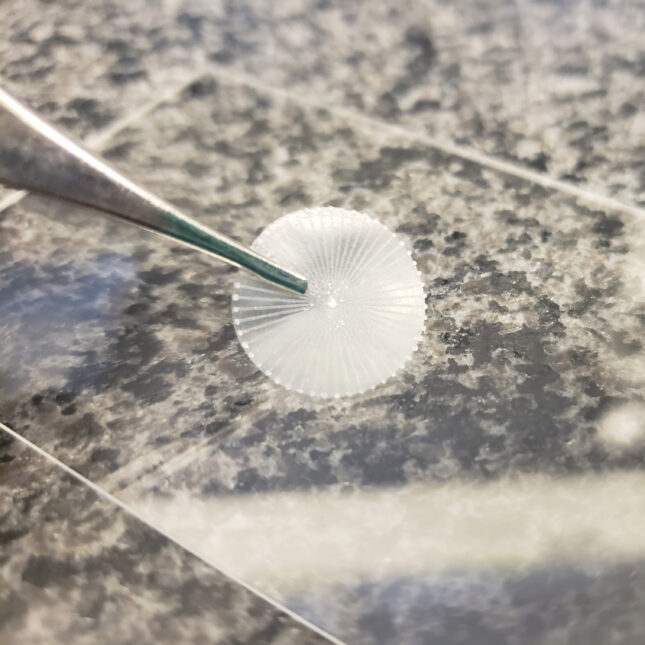This case study was adapted from an article originally published in STAT News. Read the article here.
Who:
Dr. Aaron Remenschneider, UMass Memorial Health colleagues and biomedical engineers Nicole Black and Jennifer Lewis from the Wyss Institute.
The Challenge:
Dr. Remenschneider, an otolaryngologist at Massachusetts Eye and Ear, was on the frontlines of medical response efforts following the Boston Marathon Bombing in 2013. In the weeks following, Remenschneider worked to repair the ruptured eardrums of many suffering from blast injuries. Remenschneider noticed that the standard surgical treatment approach for eardrum repairs had significant room for improvement. Not only was the technique more than 60 years old, but it required an operating room, costing the patient and the hospital thousands of dollars and creating difficulties for underinsured or patients without such facilities nearby.

The Innovation:
Together, Remenschneider and his colleagues teamed up with a group of biomedical engineers to establish Beacon Bio, a startup aiming to improve the standard of treatment for eardrum repairs. The group created a novel device called the PhonoGraft. This small, circular device made of biomaterials is 3D-printed to fit the patient’s ear, then placed onto the eardrum to act as a replacement membrane. Once inserted, the graft can conduct sound just as the native membrane, preserving the patient’s hearing while the eardrum heals. Once the eardrum has repaired itself, the PhonoGraph fully biodegrades, eliminating the need for any follow up procedures.
This invention has the potential to vastly improve access to care for patients suffering from eardrum complications. The current procedure that is standard for repairs lasts around 150 minutes. Placement of the PhonoGraft, on the other hand, takes only 20 minutes and does not require an operating room or general anesthesia.
Recently, Desktop Health, a 3D-printing company, acquired Beacon Bio, providing the necessary resources and expertise that will help to bring the many benefits of the PhonoGraft to patients. Beacon Bio and Desktop Health’s partnership has opened the doors to not only bring PhonoGraft to market but also to develop additional applications beyond the ear. Thanks to intellectual property rights and processes, like patent protections and licensing –which have enabled these two companies to jointly innovate – the minds behind the PhonoGraft can see their dream to improve patients’ ear health become a reality.


